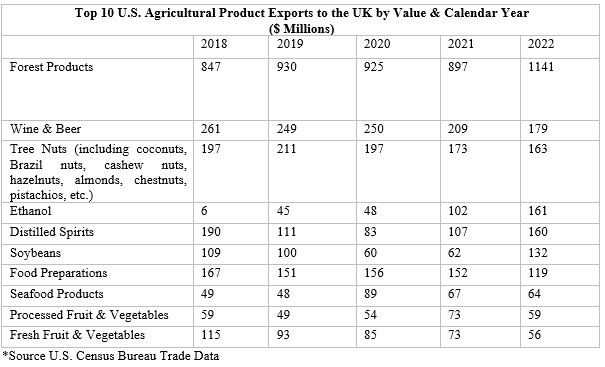Overview
In August 2023, the UK cost-of-living crisis remains tough for consumers, with almost every essential cost considerably higher than in 2022. According to the Office of National Statistics (ONS), the increased price of food shopping is the main reason for higher living costs with 95 percent of households affected. This is a major concern for the UK grocery industry.
In July 2023, the annual inflation rate for food and non-alcoholic drinks stood at 14.9 percent, down from 19.2 percent in March 2023, the highest food inflation rate in over 45 years. After a year of sharp increases in the price of food, it is anticipated that grocery price growth may have reached its peak, and that food prices will slowly start to fall.
The unprecedented outcomes of Russia’s unjust war on Ukraine has been the primary driver behind the UK cost-of-living crisis, followed by impacts of the Covid pandemic, supply chain issues, and rising commodity prices.
Agriculture in the UK is intensive, highly mechanized, and efficient by European standards, but accounts for little more than 0.5 percent of UK’s gross domestic product (GDP). While UK agriculture produces 58 percent of the country’s food needs, the UK is heavily reliant on imports to meet the varied demands of the UK consumer, who expects year-round availability of all food products.
There are strong historic and cultural ties between the UK and the United States, with the UK receptive to goods and services from the U.S. The UK presents good market opportunities for many U.S. consumer-oriented food products, including specialty food products, “healthy” food items, wine, sauces, fish/shellfish, fruit, nuts, and juices. “Health” and convenience foods are the main driving forces in the UK value-added food and beverage market. High-quality food products, especially those perceived to have health and fitness benefits as well as environmental and animal welfare considerations, are preferred by UK consumers and demanded by major UK supply chains.
In 2022, the U.S. exported $3 billion in U.S. agricultural, fish and forestry products to the UK. U.S. agricultural related products, such as wood pellets, forest products and seafood products overtook U.S. consumer-oriented food and beverage products to become the most important sector for U.S. exports to the UK amounting to $1.2 billion. U.S. forestry exports have grown significantly in recent years due to the demand for wood pellet exports for biomass electricity generation. Of the $1.1 billion in U.S. forestry export sales in 2022, 81 percent can be attributed to wood pellets. Other forestry product exports to the UK remain under pressure due to strong competition from low-cost, third-country suppliers, including the EU, such as the Scandinavian countries with technical barriers in the form of differing standards and certification requirements also making trade difficult.
The UK ranked as the tenth largest export destination for U.S. consumer-oriented food and beverage products, amounting to more than $1 billion in 2022. U.S. wines, particularly from California, have established a high profile in the UK and remain strong, with U.S. exports valued at $173 million in 2022. There has also been notable success for branded snack foods and grocery goods, largely by generating niche markets and specialist distribution based upon their quality attributes.
The UK is also a key market for U.S. fish and seafood products, which reached $64.4 million in U.S. exports to the UK in 2022. Once limited primarily to canned salmon, U.S. frozen salmon and other fish, especially pollock, are increasingly entering the UK processing sector to compensate for the decline in harvested volumes of whitefish because of low levels of fish stocks in European fishing grounds.
Leading Sub-Sectors
Best Products/Prospects
- Processed Products: health food, mainstream grocery, snack foods
- Dried and Processed Fruit: cranberries, dried cherries, prunes, raisins, wild berries
- Nuts: almonds, peanuts, pecans, pistachios, walnuts
- Fish and Seafood: cod, pollack, salmon, other fish products
- Fresh Fruit and Vegetables: apples, grapefruit, sweet potatoes, table grapes
- Drinks: craft beer, spirits, wine, low alcohol products
- Food Ingredients: any product used for further processing
- Wood pellets and other waste/residues: for renewable fuels
Resources
The U.S. Department of Agriculture (USDA) is represented in the UK by the Foreign Agricultural Service (FAS) in the U.S. Embassy in London. FAS works to improve foreign market access for U.S. agricultural, fish and forestry products and operates programs designed to build new markets and improve the competitive position of U.S. agriculture in the global marketplace.
The primary role of FAS/London is to advise U.S. exporters on how to increase U.S. market presence by focusing resources on viable product categories sought after by UK buyers. The FAS office also works on the detection and elimination of trade barriers; analysis of and reporting on the UK agricultural situation, outlook, and market opportunities for U.S. agricultural, fish and forest products; and representation of U.S. agricultural policies to UK trade and public. FAS/London works in conjunction with marketing partners such as U.S. trade associations, state departments of agriculture, small businesses, and cooperatives to implement a unified export strategy.
FAS provides a range of free services to assist U.S. exporters of agricultural products in achieving export success. More detailed information can be obtained by contacting:
FAS/London
Tel: +44207891 3313
Email: www.savorthestates.org
Website: https://www.savorthestates.org/
Twitter: @USagricultureUK
Instagram: @savorthestates
Information on FAS global services can be found at FAS Online.
